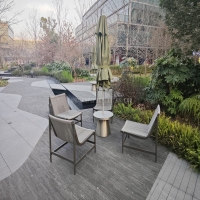Welcome to the website for landscape facilities products and knowledge.
What are the most effective ways to prevent damage from prolonged exposure to moisture?
Prolonged exposure to moisture presents significant challenges to both property and health. Understanding effective prevention methods can save homeowners substantial repair costs and protect against potential health hazards. The foundation of moisture damage prevention begins with proper ventilation. Ensuring adequate airflow throughout living spaces, particularly in bathrooms, kitchens, and basements, significantly reduces humidity accumulation. Installing exhaust fans and regularly opening windows creates an environment where moisture cannot settle and cause damage.
Beyond ventilation, strategic waterproofing measures provide essential protection. Applying quality sealants around windows, doors, and foundation cracks prevents water infiltration. For basements and crawl spaces, installing vapor barriers and proper drainage systems creates crucial defense layers. These physical barriers stop moisture at its source before it can penetrate building materials.
Regular maintenance plays an equally vital role in moisture prevention. Cleaning gutters frequently ensures proper water diversion away from your foundation. Inspecting plumbing systems for leaks and addressing them promptly prevents hidden moisture accumulation. Monitoring appliance connections, including washing machines and water heaters, helps identify potential issues before they escalate into major problems.
Controlling indoor humidity represents another critical component of moisture management. Using dehumidifiers in naturally damp areas maintains optimal humidity levels between 30-50%. This simple measure dramatically reduces the risk of mold growth and material degradation. Additionally, choosing moisture-resistant building materials for renovations, such as cement board instead of drywall in bathrooms, provides long-term protection.
Landscaping considerations also contribute significantly to moisture control. Ensuring proper ground grading that slopes away from your foundation prevents water pooling around your property. Maintaining adequate distance between soil and siding materials prevents moisture wicking into walls. Strategic planting that doesn't require excessive watering near structures further reduces moisture exposure.
For existing moisture issues, prompt action proves essential. Addressing water intrusion immediately and thoroughly drying affected areas within 24-48 hours prevents mold establishment. Using moisture meters helps identify hidden dampness in walls and floors before visible damage appears. Professional assessments may be necessary for persistent moisture problems to identify and resolve underlying causes.
Implementing these comprehensive strategies creates multiple layers of defense against moisture-related damage. The combination of preventive measures, regular maintenance, and prompt response to issues forms an effective system for protecting your property from the destructive effects of prolonged moisture exposure. By adopting these practices, homeowners can maintain healthier living environments while preserving their property's structural integrity and value.
Related search:

Recommendation
Metal structure rattan chair without armrests for single person, with woven seat and backrest.